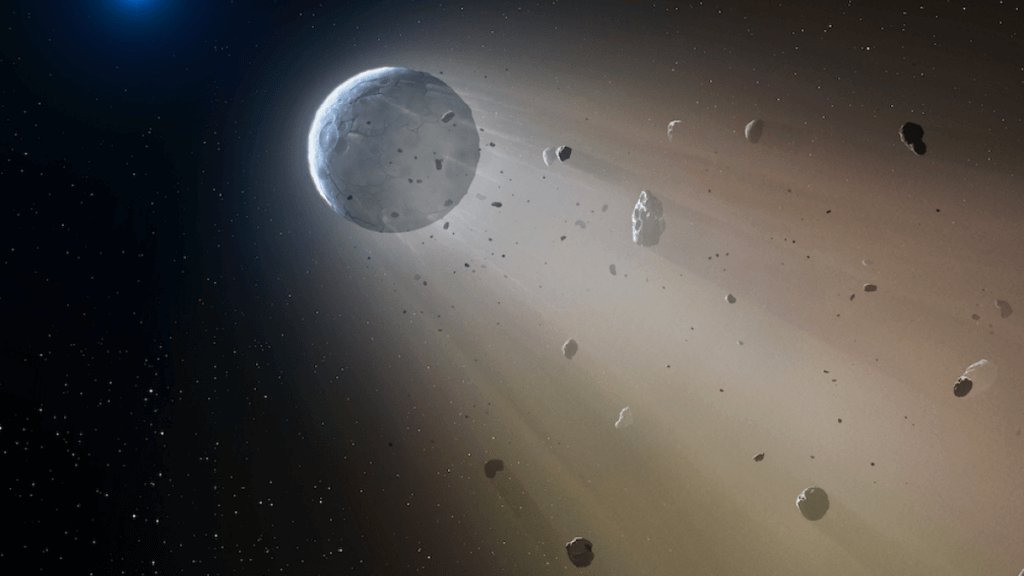
Scientists discover a mysterious solar system. It’s nothing like ours. (Image Credit: Mashable)
We know space is teeming with mystery. Adding intrigue, astronomers recently found an ancient solar system that’s far different from our cosmic home.
Some 90 light-years away, the researchers spotted an over 10 billion-year old white dwarf star — meaning the remaining hot core of a dead star similar to the sun — that’s surrounded by a graveyard of broken apart chunks of planets, called planetesimals. The faint star has pulled in debris from these objects. But this solar system is unlike anything around us. It teems with elements like lithium and potassium. Crucially, no planets in our solar system have such a composition.
Why was this ancient solar system in our early Milky Way galaxy so different? How did it become rich in these materials, which were rare at the time?
“It is a complete mystery,” Abbigail Elms, a PhD student at the University of Warwick who researches white dwarfs, told Mashable. The research was published this week in the science journal Monthly Notices of the Royal Astronomical Society.
As noted above, this solar system is old. That means the white dwarf (called WDJ2147-4035) and its surrounding solar system formed, and died, before the sun and Earth were even born. In fact, the chunks of former planets around WDJ2147-4035 are the oldest planetesimals that have ever been found in our galaxy around a white dwarf, Elms noted.
How do astronomers know what this archaic solar system was composed of?
They discovered this white dwarf, and another one of a similar age, using an observatory in space called Gaia. While orbiting the sun, this distant spacecraft is mapping out stars and galaxies in the cosmos. After spotting these white dwarfs, the researchers then turned to an instrument called the “X-Shooter,” located at a high elevation in Chile, to detect what is and isn’t present in the stars’ atmospheres (X-Shooter is a type of profoundly valuable astronomical tool called a “spectrometer”). In WDJ2147-4035, they found chemicals like lithium, potassium and sodium had accreted — or got pulled in by gravity and amassed around — the ancient star. White dwarfs are made of hydrogen or helium, so the rocky remains of planets were responsible for supplying the other unique elements, the researchers concluded (by running simulations of this solar system’s evolution).

Credit: University of Warwick / Mark Garlick
Interestingly, the other white dwarf (WDJ1922+0233) they discovered was significantly different than the mysterious one. It’s more familiar. They determined this star had pulled in planetary debris that’s similar to Earth’s rocky crust. So although one solar system remains an anomaly, the other one shows that Earth isn’t so unique in the cosmos: There are other solar systems out there somewhat like it.
Want more science and tech news delivered straight to your inbox? Sign up for Mashable’s Top Stories newsletter today.
These two solar systems, however, are filled with graveyards of former planets. Over 95 percent of stars, like the sun, evolve into white dwarfs. Near the end of their lives, they expand into colossal red giant giants, destroying or disrupting nearby objects. When our sun expands, it will engulf planets like Mercury, Venus, and maybe even Earth, before it sheds its outer layers. The red giants will leave behind relics of broken apart planets and moons. The remnant star itself will be a white dwarf.
This is our cosmic destiny. Just not for a long, long, long time.
“Our sun will evolve into a white dwarf, in approximately 5 billion years,” Elms said.





